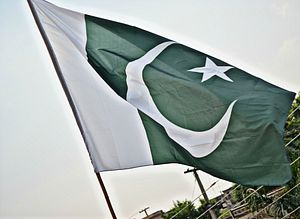Last week, a former spokesperson of the Tehreek-e-Taliban Pakistan (TTP), Ehsanullah Ehsan, fled to Turkey after escaping from a prison in Pakistan. The reported escape of Ehsan, who was involved in the murder of thousands of Pakistanis, has baffled everyone in Pakistan.
If confirmed, Ehsan’s escape shows the underlying deadly realities of Pakistan’s militant landscape, where the politics of terrorism continue to pose a serious threat to Pakistan’s interests.
His arrest was as dramatic as his reported escape: Ehsan joined the Islamic State-linked Jamaat-ul-Ahrar (JuA) in 2014 as a spokesperson after leaving the TTP in 2013. JuA has been responsible for numerous deadly attacks in Pakistan. A breakaway faction of the TTP, JuA has formed alliances with several sectarian groups in mainland Pakistan. From targeting minorities, international tourists, and police officials, the group formed an identity that depicts the profile of an organization working to undermine the country’s efforts to revamp its soft image globally.
In 2012, as part of the Taliban group, Ehsan claimed responsibility for an attack on Malala Yousafzai while in 2014, he condemned his former group’s attack on the Army Public School (APS) in Peshawar that killed more than 150 students. In 2014, a suicide bombing took place at Pakistan’s Wagah border with India, which killed more than 60 people. Responsibility for that attack was separately claimed by Jundallah, TTP, and JuA. Ehsan has had links with all these groups as they have collaborated and competed in the past to gain space in Pakistan’s militant landscape.
In 2015, Ehsan claimed responsibility for the killing of Col. (R) Shujaat Khanzada, Punjab Interior Minister, in a combined operation that included Lashkar-e-Jhangvi (LeJ), TTP, and JuA. The operation was called a revenge attack for the killing of Malik Ishaq, who was not only the leader of LeJ, but also had close linkages with the Ahl-e-Sunnat Wal Jamaat (ASWJ), a Sunni militant group known for targeting Shias in Pakistan.
Ehsan, in a statement after the killing of Khanzada, warned of action against everyone who targeted TTP, ASWJ, LeJ, and the leadership of Islamabad based notorious cleric of Lal Masjid (mosque). Lal Masjid’s leadership is known for its ties with Al-Qaeda and other extremist groups in the country as the former has called for the imposition of Sharia law in Pakistan. The Pakistani military’s 2007 operation against the Lal Masjid is a reminder of the notoriety and connections which the group has developed over the decades. As I write this piece, the mosque’s leadership has been awarded a large piece of land to construct another mosque in the capital.
The presence of Ehsan at the epicenter of all these groups points toward the complexity of Pakistan’s militant problem where the state at times has to negotiate and offer deals to proscribed groups and leaders rather than prosecuting and holding them fully accountable. The escape of Ehsan either shows utter incompetence or probable complicity of the state at some level. “I had surrendered to the Pakistani security authorities on February 5, 2017, under an agreement. I honored this agreement for three years but the Pakistani authorities violated it and kept me in a prison along with my children,” said a statement reportedly released by Ehsan after his recent escape.
The statement confirms two things. One, Ehsan’s surrender was the result of a negotiation between the Pakistani state and an individual who had developed differences with JuA and TTP’s leadership. It’s possible, that Ehsan sought protection from the Pakistani state for himself and his family in return for sharing information that could help the security agencies in Pakistan breaking up TTP and JuA networks. After Ehsan’s arrest, many high profile JuA and TTP militants have been killed in Afghanistan and Pakistan. Second, Ehsan’s apparent escape means that militant groups in Pakistan can make a deal with the state as long as they are willing to cooperate in killing other groups of leaders.
This entire episode doesn’t send the right message to the world at a time when Pakistan is trying to convince everyone that the country has taken action against all militant groups. It should be noted that the previous government made a deal with a terrorist who once had a $1 million bounty on his head. The government in Pakistan has not confirmed or denied reports about Ehsan’s escape. The Financial Action Task Force (FATF) may include Ehsan’s issue in its questioning during the next hearing if a clarity didn’t emerge on the situation of a deadly terrorist.
In any case, the development doesn’t bode well for Pakistan’s counter-terrorism gains and the efforts to showcase the country’s counter-terrorism commitments internationally.

































